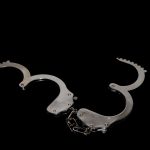Teen Charged with Causing Grievous Bodily Harm

A 17-year-old boy has been charged with acts intended to cause grievous bodily harm, after allegedly confessing to slashing a young schoolgirl’s face.
Girl allegedly slashed on the way to school
The 12-year old girl is alleged to have been walking through a pedestrian tunnel on her way to school just before 8am, when she was approached by the teen. The defendant is reported to have said nothing, but began to slash her face with what police believe was a box cutter knife, before fleeing the scene.
Police described the incident as “unprovoked” and “cowardly”, before dispatching more than 30 detectives to the scene.
The alleged assailant, who is believed to have mental health issues, ran home covered in blood, and is said to have confessed his actions to a relative who immediately contacted police.
The young girl made it to school where she was treated by paramedics, before being rushed to Children’s Hospital. She is now recovering from surgery.
The defendant is said to have refused a police interview, and been charged with acts intended to cause grievous bodily harm.
His case was been briefly mentioned in Brisbane Children’s Court
The charge
The offence of ‘acts intended to cause grievous bodily harm’ falls under section 317 of Queensland’s Criminal Code, which prescribes a maximum penalty of life in prison for anyone who:
- with intent to maim, disfigure or disable, any person; or
- with intent to cause grievous bodily harm or transmit a serious disease; or
- with intent to resist or prevent the lawful arrest or detention of any person; or
- with intent to resist or prevent a public officer from acting in accordance with lawful authority,
either:
- in any way unlawfully wounds, does grievous bodily harm, or transmits a serious disease to, any person; or
- unlawfully strikes, or attempts in any way to strike, any person with any kind of projectile or anything else capable of achieving the intention; or
- unlawfully causes any explosive substance to explode; or
- sends or delivers any explosive substance or other dangerous or noxious thing to any person; or
- causes any such substance or thing to be taken or received by any person; or
- puts any corrosive fluid or any destructive or explosive substance in any place; or
- unlawfully casts or throws any such fluid or substance at or upon any person, or otherwise applies any such fluid or substance to the person of any person.
In New South Wales
The Crimes Act 1900 sets out the laws and penalties for grievous bodily harm offences in New South Wales.
Section 54 of the Act sets down a maximum penalty of two years in prison for anyone who causes grievous bodily harm (or GBH) by an unlawful or negligent act or omission, which is one that is either contrary to a law or where a reasonable person would have foreseen it could lead to such harm.
Section 35(2) prescribes a maximum penalty of 10 years’ imprisonment for a person who causes GBH to another person through an act or omission that is reckless; in other words, where the defendant has “a foresight of the possibility of the infliction of grievous bodily harm” yet proceeds regardless.
Section 35(2) also attracts a ‘standard non parole period’ (SNPP) of four years in prison. An SNPP is a guidepost or reference point for the sentencing judge when deciding how long a person must spend behind bars (called the ‘non parole period) before being eligible to apply for release from prison on parole.
Grievous bodily harm is defined by the courts as harm of a ‘really serious kind’. Although there is no exhaustive list of what amounts to GBH, section 4 of the Act says it includes:
- the destruction (other than in the course of a medical procedure) of the foetus of a pregnant woman, whether or not the woman suffers any other harm, and
- any permanent or serious disfiguring of the person, and
- any grievous bodily disease (in which case a reference to the infliction of grievous bodily harm includes a reference to causing a person to contract a grievous bodily disease).
The Public Defenders Sentencing Tables also provide examples of injuries which the courts have considered be ‘grievous’.
Section 33(1) of the Act prescribes a maximum penalty of 25 years in prison for anyone who causes GBH with an intention to do so. That offence also comes with a standard non parole period of 7 years imprisonment.
Onus of proof and defences to assault charges
To establish an assault offence, the prosecution is required to prove each of the ‘essential elements’ (or ingredients) of that offence beyond reasonable doubt.
So, for example, to establish an offence under section 33 it must prove that the defendant actually intended to inflict GBH, and was not just negligent or reckless.
In addition to this, there are a number of defences to assault charges including:
- Self defence,
- Duress,
- Necessity, and
- Lawful correction.
If you are accused of assault, it is a good idea to seek advice from a specialist criminal defence law firm.







